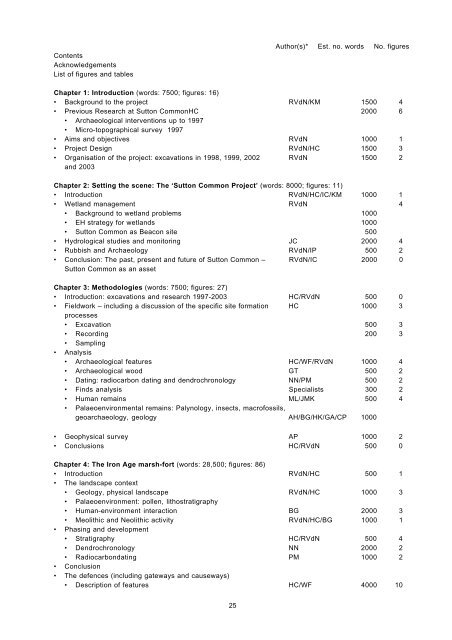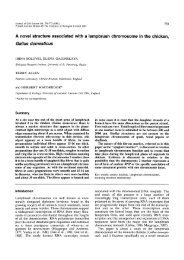Sutton Common Updated project design - University of Exeter
Sutton Common Updated project design - University of Exeter
Sutton Common Updated project design - University of Exeter
You also want an ePaper? Increase the reach of your titles
YUMPU automatically turns print PDFs into web optimized ePapers that Google loves.
Contents<br />
Acknowledgements<br />
List <strong>of</strong> figures and tables<br />
Author(s)* Est. no. words No. figures<br />
Chapter 1: Introduction (words: 7500; figures: 16)<br />
• Background to the <strong>project</strong> RVdN/KM 1500 4<br />
• Previous Research at <strong>Sutton</strong> <strong>Common</strong>HC 2000 6<br />
• Archaeological interventions up to 1997<br />
• Micro-topographical survey 1997<br />
• Aims and objectives RVdN 1000 1<br />
• Project Design RVdN/HC 1500 3<br />
• Organisation <strong>of</strong> the <strong>project</strong>: excavations in 1998, 1999, 2002 RVdN 1500 2<br />
and 2003<br />
Chapter 2: Setting the scene: The ‘<strong>Sutton</strong> <strong>Common</strong> Project’ (words: 8000; figures: 11)<br />
• Introduction RVdN/HC/IC/KM 1000 1<br />
• Wetland management RVdN 4<br />
• Background to wetland problems 1000<br />
• EH strategy for wetlands 1000<br />
• <strong>Sutton</strong> <strong>Common</strong> as Beacon site 500<br />
• Hydrological studies and monitoring JC 2000 4<br />
• Rubbish and Archaeology RVdN/IP 500 2<br />
• Conclusion: The past, present and future <strong>of</strong> <strong>Sutton</strong> <strong>Common</strong> – RVdN/IC 2000 0<br />
<strong>Sutton</strong> <strong>Common</strong> as an asset<br />
Chapter 3: Methodologies (words: 7500; figures: 27)<br />
• Introduction: excavations and research 1997-2003 HC/RVdN 500 0<br />
• Fieldwork – including a discussion <strong>of</strong> the specific site formation HC 1000 3<br />
processes<br />
• Excavation 500 3<br />
• Recording 200 3<br />
• Sampling<br />
• Analysis<br />
• Archaeological features HC/WF/RVdN 1000 4<br />
• Archaeological wood GT 500 2<br />
• Dating: radiocarbon dating and dendrochronology NN/PM 500 2<br />
• Finds analysis Specialists 300 2<br />
• Human remains ML/JMK 500 4<br />
• Palaeoenvironmental remains: Palynology, insects, macr<strong>of</strong>ossils,<br />
geoarchaeology, geology AH/BG/HK/GA/CP 1000<br />
• Geophysical survey AP 1000 2<br />
• Conclusions HC/RVdN 500 0<br />
Chapter 4: The Iron Age marsh-fort (words: 28,500; figures: 86)<br />
• Introduction RVdN/HC 500 1<br />
• The landscape context<br />
• Geology, physical landscape RVdN/HC 1000 3<br />
• Palaeoenvironment: pollen, lithostratigraphy<br />
• Human-environment interaction BG 2000 3<br />
• Meolithic and Neolithic activity RVdN/HC/BG 1000 1<br />
• Phasing and development<br />
• Stratigraphy HC/RVdN 500 4<br />
• Dendrochronology NN 2000 2<br />
• Radiocarbondating PM 1000 2<br />
• Conclusion<br />
• The defences (including gateways and causeways)<br />
• Description <strong>of</strong> features HC/WF 4000 10<br />
25
















